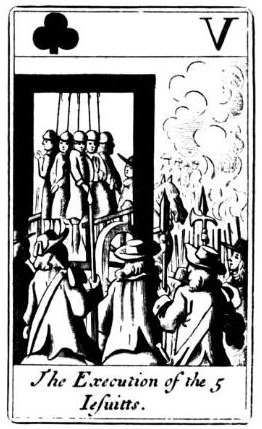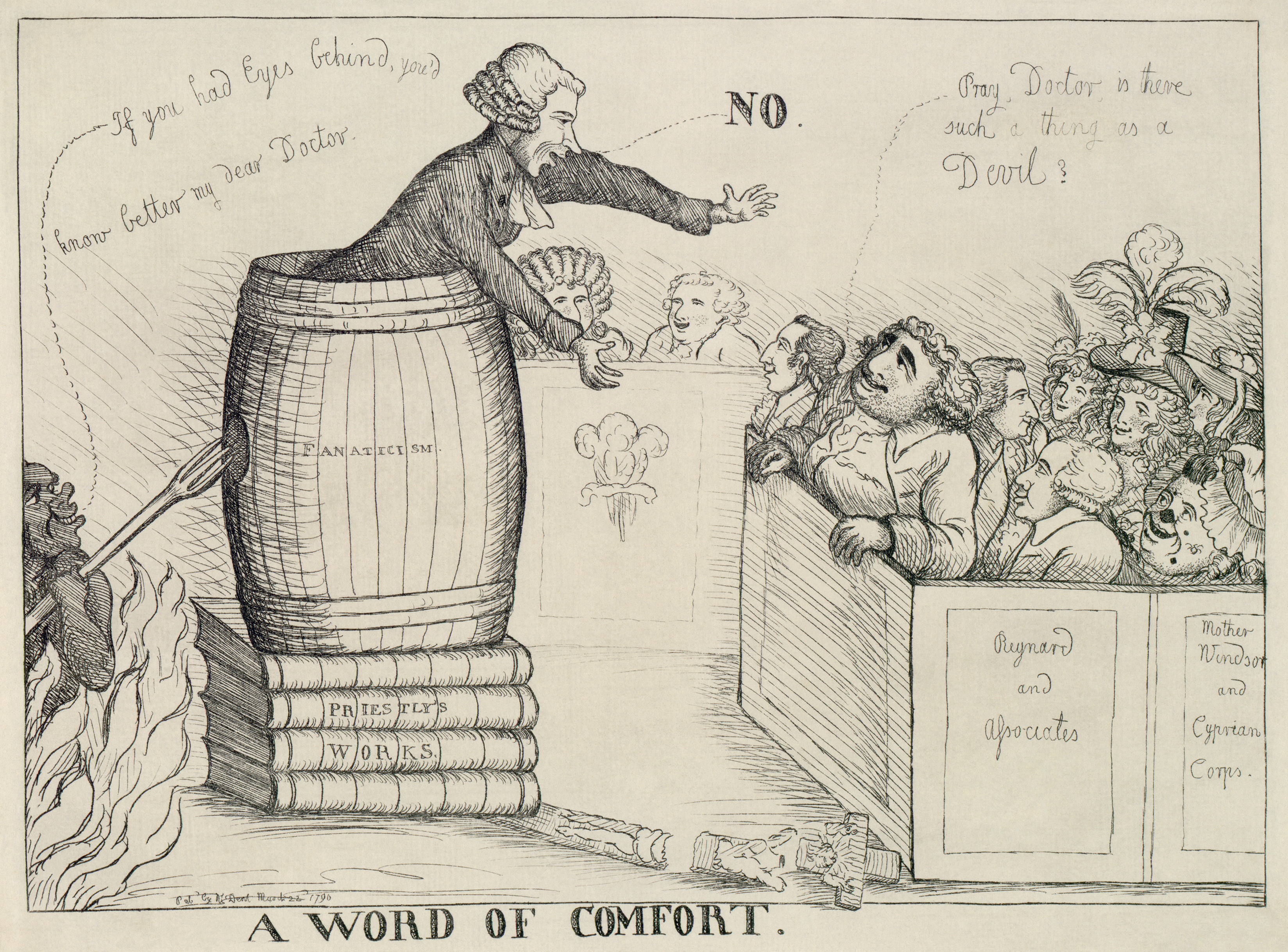|
Edward Coleman (martyr)
Edward Colman or Coleman (17 May 1636 – 3 December 1678) was an English Catholic courtier under Charles II of England. He was hanged, drawn and quartered on a treason charge, having been implicated by Titus Oates in his false accusations concerning a Popish Plot.Andrew Barclay, 'Colman , Edward (1636–1678)', Oxford Dictionary of National Biography, Oxford University Press, 2004 He is a Catholic martyr, beatified by Pope Pius XI in 1929. Life He was born at Brent Eleigh, Suffolk, son of the local vicar Thomas Colman and his wife Margaret Wilson; he was a cousin of the Salisbury MP, Richard Colman, who died in 1672, and through Richard's wife Anne Hyde a distant connection of Edward Hyde, 1st Earl of Clarendon. He attended Trinity College, Cambridge, receiving an MA in 1659. Colman, who had been reared as a strict Puritan, converted to Roman Catholicism in the early 1660s. He has been described as a man of considerable charm and ability, but lacking in common sense or polit ... [...More Info...] [...Related Items...] OR: [Wikipedia] [Google] [Baidu] |
Popish Plot
The Popish Plot was a fictitious conspiracy invented by Titus Oates that between 1678 and 1681 gripped the Kingdoms of England and Scotland in anti-Catholic hysteria. Oates alleged that there was an extensive Catholic conspiracy to assassinate Charles II, accusations that led to the executions of at least 22 men and precipitated the Exclusion Bill Crisis. Eventually, Oates's intricate web of accusations fell apart, leading to his arrest and conviction for perjury. Background Development of English anti-Catholicism The fictitious Popish Plot must be understood against the background of the English Reformation and the subsequent development of a strong anti-Catholic sentiment among the mostly Protestant population of England. The English Reformation began in 1533, when King Henry VIII (1509–1547) sought an annulment of his marriage to Catherine of Aragon to marry Anne Boleyn. As the Pope would not grant this, Henry broke away from Rome and took control of the Church in ... [...More Info...] [...Related Items...] OR: [Wikipedia] [Google] [Baidu] |
Salisbury (UK Parliament Constituency)
Salisbury is a constituency represented in the House of Commons of the UK Parliament since 2010 by John Glen of the Conservative Party. History From 1295, (the Model Parliament) a form of this constituency on a narrower area, the Parliamentary borough of Salisbury, returned two MPs to the House of Commons of England Elections were held using the bloc vote system. This afforded the ability for wealthy male townsfolk who owned property rated at more than £2 a year liability in Land Tax to vote in the county and borough (if they met the requirements of both systems). The franchise (right to vote) in the town was generally restricted to male tradespersons and professionals within the central town wards, however in medieval elections would have been the aldermen. The borough constituency co-existed with a neighbouring minuscule-electorate seat described towards its Great Reform Act abolition as a rotten borough: Old Sarum that covered the mostly abandoned Roman citadel to the ... [...More Info...] [...Related Items...] OR: [Wikipedia] [Google] [Baidu] |
Cavalier Parliament
The Cavalier Parliament of England lasted from 8 May 1661 until 24 January 1679. It was the longest English Parliament, and longer than any Great British or UK Parliament to date, enduring for nearly 18 years of the quarter-century reign of Charles II of England. Like its predecessor, the Convention Parliament, it was overwhelmingly Royalist and is also known as the Pensioner Parliament for the many pensions it granted to adherents of the King. History Clarendon ministry The first session of the Cavalier Parliament opened on May 8, 1661. Among the first orders of business was the confirmation of the acts of the previous year's irregular Convention of 1660 as legitimate (notably, the Indemnity and Oblivion Act The Indemnity and Oblivion Act 1660 was an Act of the Parliament of England (12 Cha. II c. 11), the long title of which is "An Act of Free and General Pardon, Indemnity, and Oblivion". This act was a general pardon for everyone who had committe ...). Parliame ... [...More Info...] [...Related Items...] OR: [Wikipedia] [Google] [Baidu] |
Test Act
The Test Acts were a series of English penal laws that served as a religious test for public office and imposed various civil disabilities on Roman Catholics and nonconformists. The underlying principle was that only people taking communion in the established Church of England were eligible for public employment, and the severe penalties pronounced against recusants, whether Catholic or nonconformist, were affirmations of this principle. Similar laws were introduced in Scotland with respect to the Presbyterian Church of Scotland. In practice nonconformists were often exempted from some of these laws through the regular passage of Acts of Indemnity: in particular, the Indemnity Act 1727 relieved Nonconformists from the requirements in the Test Act 1673 and the Corporation Act 1661 that public office holders must have taken the sacrament of the Lord's Supper in an Anglican church. Except at Oxbridge, where nonconformists and Catholics could not matriculate (Oxford) or graduate (Ca ... [...More Info...] [...Related Items...] OR: [Wikipedia] [Google] [Baidu] |
Mary Of Modena
Mary of Modena ( it, Maria Beatrice Eleonora Anna Margherita Isabella d'Este; ) was Queen of England, Scotland and Ireland as the second wife of James II and VII. A devout Roman Catholic, Mary married the widower James, who was then the younger brother and heir presumptive of Charles II. She was uninterested in politics and devoted to James and their children, two of whom survived to adulthood: the Jacobite claimant to the thrones, James Francis Edward, and Louisa Maria Teresa. Born a princess of the northwestern Italian Duchy of Modena, Mary is primarily remembered for the controversial birth of James Francis Edward, her only surviving son. It was widely rumoured that he was smuggled into the birth chamber in a warming pan in order to perpetuate her husband's Catholic Stuart dynasty. James Francis Edward's birth was a contributing factor to the "Glorious Revolution", the revolution which deposed James II and VII, and replaced him with Mary II, a Protestant, James II's eld ... [...More Info...] [...Related Items...] OR: [Wikipedia] [Google] [Baidu] |
Emmanuel Lobb
Emmanuel Lobb (1594–1671), pseudonyms Joseph Simons or Simeon, was an English Jesuit and dramatist. He is chiefly remembered for converting the future King James II to the Roman Catholic faith. Life Born at Portsmouth, Lobb was at age of 11 sent to Portugal to learn the language for commerce, and there was converted to the Roman Catholic faith by Henry Floyd. He was sent to St Omer College, and then entered the English College at Rome under the assumed name of Joseph Simeon, on 13 October 1616. Having received minor orders in 1617, he left Rome for Belgium on 14 September 1619, and was received into the Society of Jesus at Liège. Lobb was professed of the four vows on 25 January 1632–3. After teaching rhetoric and ''belles-lettres'' at St Omer College for five years, he became professor of theology, philosophy, and sacred scripture in the English theologate of the Society of Jesus at Liège. In 1647 he was appointed rector of the English College at Rome, and in 1650 rector o ... [...More Info...] [...Related Items...] OR: [Wikipedia] [Google] [Baidu] |
James II Of England
James VII and II (14 October 1633 16 September 1701) was King of England and King of Ireland as James II, and King of Scotland as James VII from the death of his elder brother, Charles II, on 6 February 1685. He was deposed in the Glorious Revolution of 1688. He was the last Catholic monarch of England, Scotland, and Ireland. His reign is now remembered primarily for conflicts over religious tolerance, but it also involved struggles over the principles of absolutism and the divine right of kings. His deposition ended a century of political and civil strife in England by confirming the primacy of the English Parliament over the Crown. James succeeded to the thrones of England, Ireland, and Scotland following the death of his brother with widespread support in all three countries, largely because the principles of eligibility based on divine right and birth were widely accepted. Tolerance of his personal Catholicism did not extend to tolerance of Catholicism in general, an ... [...More Info...] [...Related Items...] OR: [Wikipedia] [Google] [Baidu] |
Gentleman Pensioner
His Majesty's Body Guard of the Honourable Corps of Gentlemen at Arms is a bodyguard to the British Monarch. Until 17 March 1834, they were known as The Honourable Band of Gentlemen Pensioners. Formation The corps was formed as the Troop of Gentlemen in 1509 by King Henry VIII to act as a mounted escort, armed with spear and lance to protect the sovereign, in battle or elsewhere. Henry decided to have "this new and sumptuous Troop of Gentlemen composed of cadets of noble families and the highest order of gentry as his personal Body Guard or 'Nearest Guard'", cadets being the younger sons of nobles. As his Body Guard, it accompanied Henry to France in 1513 and took part in the Battle of Guinegate (better known as the Battle of the Spurs) and then at the Field of Cloth of Gold in 1520. In 1526, they became a dismounted bodyguard armed with battleaxes. They last saw service in battle during the English Civil War, during which a Gentleman Matthews saved the Prince of Wales at the B ... [...More Info...] [...Related Items...] OR: [Wikipedia] [Google] [Baidu] |
Periwig
A wig is a head or hair accessory made from human hair, animal hair, or synthetic fiber. The word wig is short for periwig, which makes its earliest known appearance in the English language in William Shakespeare's ''The Two Gentlemen of Verona''. Some people wear wigs to disguise baldness; a wig may be used as a less intrusive and less expensive alternative to medical therapies for restoring hair or for a religious reason. History Ancient and medieval use In Egyptian society men and women commonly had clean shaven or close cropped hair and often wore wigs. The ancient Egyptians created the wig to shield shaved, hairless heads from the sun. They also wore the wigs on top of their hair using beeswax and resin to keep the wigs in place. Wealthy Egyptians would wear elaborate wigs and scented head cones of animal fat on top of their wigs. Other ancient cultures, including the Assyrians, Phoenicians, Jews in ancient Israel, Greeks and Romans, also used wigs as an everyday fashion. ... [...More Info...] [...Related Items...] OR: [Wikipedia] [Google] [Baidu] |
Fasting
Fasting is the abstention from eating and sometimes drinking. From a purely physiological context, "fasting" may refer to the metabolic status of a person who has not eaten overnight (see " Breakfast"), or to the metabolic state achieved after complete digestion and absorption of a meal. Metabolic changes in the fasting state begin after absorption of a meal (typically 3–5 hours after eating). A diagnostic fast refers to prolonged fasting from 1 to 100 hours (depending on age) conducted under observation to facilitate the investigation of a health complication, usually hypoglycemia. Many people may also fast as part of a medical procedure or a check-up, such as preceding a colonoscopy or surgery, or before certain medical tests. Intermittent fasting is a technique sometimes used for weight loss that incorporates regular fasting into a person's dietary schedule. Fasting may also be part of a religious ritual, often associated with specifically scheduled fast days, as determ ... [...More Info...] [...Related Items...] OR: [Wikipedia] [Google] [Baidu] |
Robert Southwell (diplomat)
Sir Robert Southwell PRS (31 December 1635 – 11 September 1702) was a diplomat. He was Secretary of State for Ireland and President of the Royal Society from 1690. Background and education Robert Southwell was born near Kinsale in County Cork on 31 December 1635 to his namesake Robert Southwell (1608-1677) and Helena Gore, daughter of Major Robert Gore, of Sherston, Wiltshire. The family had settled in Ireland a couple of generations earlier, and his father had become a customs official at Kinsale in 1631. Like other Munster planters, he was threatened by the Irish Rebellion of 1641. During the Civil War, he followed the Royalist cause, placing him in a weak position. This may be why his son was sent to Christchurch, Hampshire in 1650, before graduating to Queen's College, Oxford, from which he graduated BA in 1655. Between 1659 and 1661, he travelled in Europe meeting some of the leading intellectuals of his time. He was elected a Fellow of the Royal Society in 1662. Pub ... [...More Info...] [...Related Items...] OR: [Wikipedia] [Google] [Baidu] |
Puritan
The Puritans were English Protestants in the 16th and 17th centuries who sought to purify the Church of England of Catholic Church, Roman Catholic practices, maintaining that the Church of England had not been fully reformed and should become more Protestant. Puritanism played a significant role in English history, especially during the Protectorate. Puritans were dissatisfied with the limited extent of the English Reformation and with the Church of England's toleration of certain practices associated with the Roman Catholic Church. They formed and identified with various religious groups advocating greater purity of worship and doctrine, as well as personal and corporate piety. Puritans adopted a Reformed theology, and in that sense they were Calvinists (as were many of their earlier opponents). In church polity, some advocated separation from all other established Christian denominations in favour of autonomous gathered churches. These English Dissenters, Separatist and Indepe ... [...More Info...] [...Related Items...] OR: [Wikipedia] [Google] [Baidu] |




.jpg)


